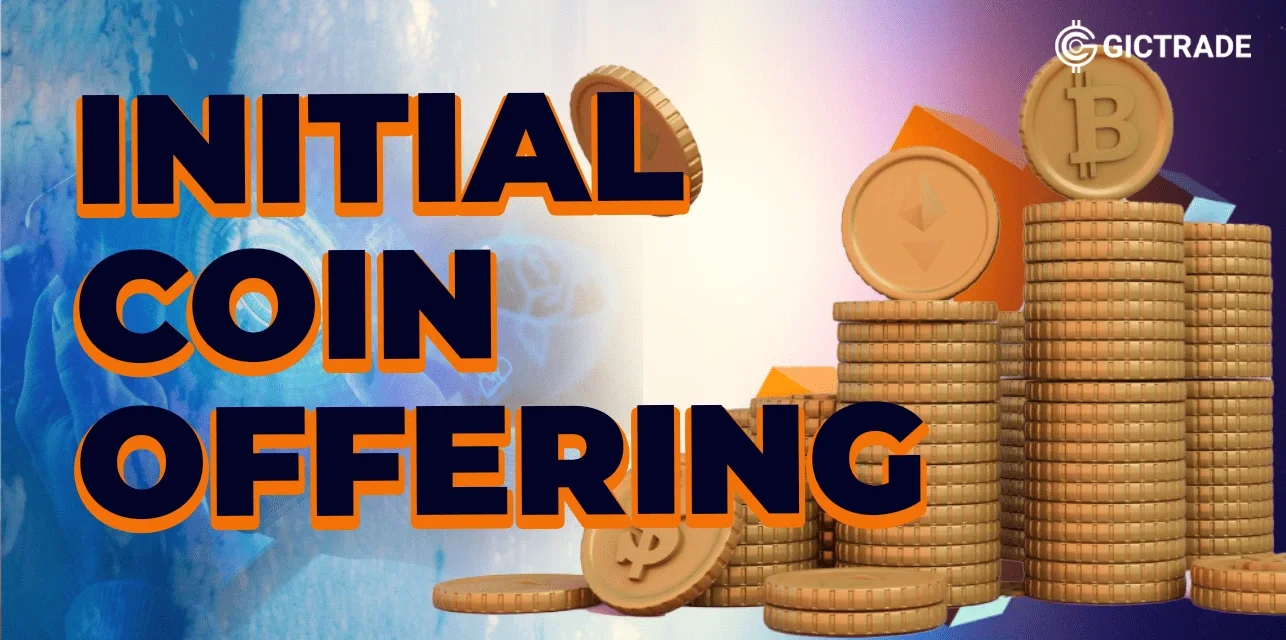An ICO is a form of cryptocurrency that businesses use to raise capital. To find out more about the Initial Coin Offering, read the article below!
What is ICO (Initial Coin Offering) ?
ICOs are another form of cryptocurrency that businesses use to raise capital. Through the ICO trading platform, investors receive unique cryptocurrency "tokens" in exchange for their monetary investment in the business. It is a means of crowdfunding through the creation and sale of digital tokens to fund the development of the project. This unique token functions like a unit of currency that gives investors access to certain features of the project run by the issuing company. This token is unique in that it helps fund open-source software projects that would otherwise be difficult to finance with traditional structures.

The types of ICOs are
ICOs have types that must be known, the types of Initial Coin Offerings are:
1. ICO Private
In a private initial coin offering, only a limited number of investors can participate in the process. Generally, only accredited investors (financial institutions and high-net-worth individuals) can participate in private ICOs, and companies can choose to set a minimum investment amount.
2. ICO Public
A public initial coin offering is a form of crowdfunding that targets the general public. Public offering is a form of democratization of investment because almost anyone can become an investor. However, due to regulatory issues, private ICOs are becoming a more viable option compared to public offerings. The rise of cryptocurrencies and blockchain technology helped increase the popularity of ICOs. In 2017, more than $7 billion was raised using ICOs. In 2018, the figure almost doubled. The largest ICO to date was executed by Telegram, an instant messaging service provider. During the private ICO, the UK-listed company raised more than $1.7 billion.
Initial Coin Offering (ICO) vs. Initial Public Offerings (IPO)
An IPO raises money for companies seeking funds from investors and results in a distribution of the company's shares to investors. For ICOs, crypto companies raise funds through the sale of coins or tokens. In both cases, investors are optimistic about the company or cryptocurrency and invest based on the belief that the value of the asset will increase over time. The main difference between an ICO and an IPO is that investing in an ICO does not guarantee ownership of shares in a crypto project or company. ICO participants gamble that a currency that is currently worthless will later increase in value above its original purchase price. Although IPOs are funded by generally more conservative investors who anticipate financial returns, ICOs can receive funding from risk-tolerant backers who want to invest in exciting new projects. ICOs differ from crowdfunding events in that they offer the possibility of financial gains over time, whereas crowdfunding initiatives accept donations. ICOs are also referred to as "crowd sales."
How Does an ICO Work?
Initial coin offerings are a sophisticated process that requires in-depth knowledge of technology, finance, and law. The main idea of the ICO is to utilize the decentralized system of blockchain technology in fundraising activities that will align the interests of various stakeholders. The steps in the ICO are listed below :
1. Identify investment targets
Every ICO begins with the company's intention to raise capital. The company identifies targets for the fundraising campaign and creates relevant materials about the company or project for potential investors.
2. Token creation
The next step in the initial coin offering is the creation of tokens. Basically, a token is a representation of an asset or utility on the blockchain. The token is worth it and can be traded. They should not be confused with cryptocurrencies because tokens are simply modifications of existing cryptocurrencies. Unlike stocks, tokens generally do not provide equity shares in a company. In contrast, most tokens give their owners some shares in the products or services created by the company. Tokens are created using a defined blockchain platform. The process of creating a token is relatively simple because companies are not required to write code from scratch as in the creation of new cryptocurrencies. Instead, existing blockchain platforms running existing cryptocurrencies such as Ethereum allow the creation of tokens with minimal code modifications.
3. Promotional campaigns
At the same time, companies usually conduct promotional campaigns to attract potential investors. Note that campaigns are typically conducted online to reach the widest range of investors. However, today, some major online platforms such as Facebook and Google ban ICO advertising.
4. Initial offer
After the creation of tokens, they are offered to investors. Offers can be arranged in multiple rounds. Companies can then use the proceeds from the ICO to launch new products or services while investors can expect to use the tokens earned to profit from these products/services or wait for the token value appreciation.
ICO Regulation
Initial coin offerings are a completely new phenomenon in the world of finance and technology. The introduction of ICOs has made a significant impact on the process of raising capital in recent years. However, regulatory authorities around the world are not ready for the introduction of a new fundraising model in finance. The approach to the regulation of initial coin offerings varies among different countries. For example, the Chinese and South Korean governments banned ICOs. Many European countries, as well as the United States and Canada, are working on the development of specific regulations to regulate the conduct of ICOs. At the same time, there are already published guidelines governing ICOs in a number of countries, including Australia, New Zealand, Hong Kong, and the United Arab Emirates (UAE).
Example of Initial Coin Offering (ICO)
ICOs are a very popular way to raise money in the crypto space. Most of them fail, but there are also diamonds that are sometimes difficult. Here are some examples of major ICOs over the years:
Ethereum : Many crypto enthusiasts were enthusiastic about Ethereum and programmable blockchains when the July 2014 ICO took place. It eventually raised $18.4 million and went on to become the second-largest cryptocurrency.
Cardano (CRYPTO:ADA) : Cardano improves on aspects of Ethereum and has an even more successful ICO. In January 2017, it raised $62.2 million. It will eventually make it into the top five cryptocurrencies by market capitalization.
Tezos (CRYPTO:XTZ) : Tezos raised $232 million through its ICO in July 2017, but it wasn't entirely successful. There have been many delays in distributing tokens sold through ICOs, leading to class action lawsuits. Tezos reached a $25 million settlement with all parties in 2020.
Dragon Coins (CRYPTO:DRG) : There have been many failed ICOs, and Dragon Coins is one of the most famous examples. In March 2018, it raised $320 million. A series of controversies led to an almost instantaneous drop in price when it was available for public trading. In 2021, its market cap fell below $1 million. Investors are attracted to ICOs for the dream of buying early into successful cryptocurrencies. While this is possible, it takes a lot of research and time to sort through a large number of upcoming ICOs. Considering the risks involved, it is best to approach with caution.
Risks of investing in ICOs
Any token sold through an ICO is considered a high-risk investment. The market is still poorly regulated, ICOs are rampant and investors have no protection if the ICO fails or turns out to be fraudulent. A 2018 Satis report prepared for Bloomberg stated nearly 80% of ICOs at the time were believed to be fake sales. For anyone looking to participate in an ICO, it is important to include the following in your due diligence process:
-
- Review the project team to see if they have real-world experience in creating a successful business. Ideally, team members should also list their social media accounts in order to be contacted.
- Review the white paper and project roadmap to see how the product or service in question will work, including when certain features will be rolled out.
- Check to see if any computer code has been audited by a third party. This would be a good indication that a project is serious about its security.
- Look for typos on these websites is usually an early red flag that the website has been created quickly with little thought, and can indicate that it is a scam.
Tokens, especially those that have successful sales, are usually listed on crypto exchanges. Once registered, new investors who miss out on token offerings have the opportunity to buy the coins. If a project has marketed itself well, there may be a significant demand for its token post-ICO. However, it is common practice to see ICO investors release their discounted coins to the market to secure a return on their investment or token price quickly and easily. Some tokens rarely recover their price from these types of sales and are a big part of why ICOs are less commonly used today. A study from 2018 showed more than 50% of ICO projects fail to survive more than four months after launch. Here's a list of more than 2,400 ICOs that failed, or "dead coins." That's an explanation of hedge funds, you can also read other GIC articles to get more knowledge, such as the explanation of the
Black Card, only in the
GIC Journal. Make sure, download GIC Mobile Apps on the
Google Play Store as well as the
Apple App Store. Don't forget to
register for trading on GIC to try to start owning digital assets.



 Last:
Last: 







